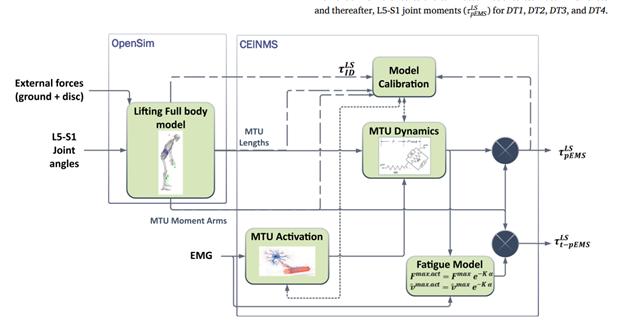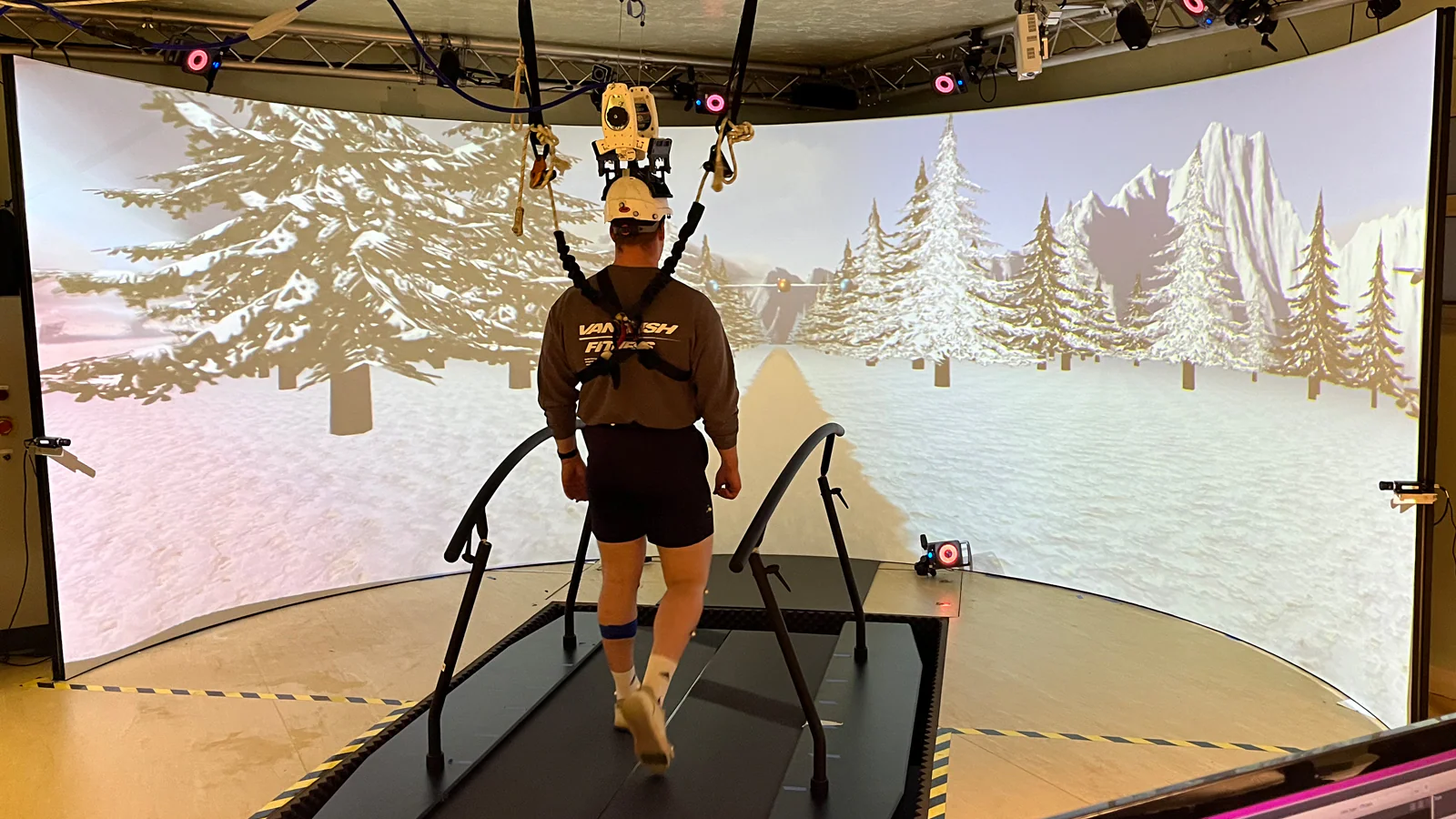Musculoskeletal modeling uses muscle behavior to create a computational model. These models can be used to understand muscle fatigue and risk of injury. Personalized electromyography-driven musculoskeletal models (p-EMS) take in EMG signals from a patient to determine fatigue changes.
The research created a novel t-pEMS (a p-EMS coupled with muscle force decay models) that tracks person-specific fatigue progression and accurate fatigue estimation from joint muscle-moments during functional tasks.
The t-pEMS model was able to characterize fatigue while also being patient specific. It has the potential to be applied in sports training, rehabilitation of post musculoskeletal disorders, or manual handling in factories.
Musculoskeletal modeling is the computational modeling of the musculoskeletal system to determine and study muscle behavior, such as muscle kinematics and muscle fatigue. Modeling muscle behavior can provide insight into incidence and progression of fatigue. Specifically, understanding muscle fatigue is needed to discern muscle overuse and risk of injury that leads to muscle disorders. Personalized electromyography-driven musculoskeletal models (pEMS) are a type of musculoskeletal model that is human-specific and utilizes EMG to determine fatigue changes. These models can provide insight into the influence the patient has on the outcome of the model.
Effective musculoskeletal fatigue modeling simulates both the central and peripheral components of fatigue. To do this, changes in neural drive or EMG activity and their influence on the model need to be measured. Most current fatigue models are not capable of capturing both the central and peripheral components of fatigue, thus increasing inaccuracy of the model. In addition, these models do not measure the changes in muscle activity or modulate the force distribution across the joint muscles. The fatigue models that do involve EMG and muscle force do not characterize their relationship appropriately. By utilizing EMG activity, pEMS, coupled with muscle force decay models, results in a model that captures both the central and peripheral components of fatigue. These models are called time-varying pEMS (t-pEMS).
In this study, Mohamed Refai and his team created a novel t-pEMS model that tracks person-specific fatigue progression and accurate fatigue estimation from joint muscle-moments during functional tasks. The pEMS model was implemented first and the time-varying aspect was added consequently. To achieve an accurate pEMS, an OpenSim biomechanical model called the Lifting Full-Body model (LFB) was utilized. The LFB composed of 238 Hill-type muscle-tendon units (MTUs). With the addition of EMG, the parameters of the pEMS were calibrated; this calibrated model estimated joint moments and MTU mechanics. Fatigue was introduced in the time-varying fatigue model, evolving the pEMS into a t-PEMS. Progression of peripheral fatigue affects maximum force and peak contraction velocity; therefore, these two variables were modelled for the time-varying aspect.

Delsys EMG sensors were used to measure the EMG that contributed to the calibration of the p-EMS model. In addition, the EMG signals were mapped in the LFB model according to the MTUs. Regarding the t-pEMS, EMG was utilized in the modeling of the maximum isometric force and peak contraction velocity as the measure of muscle specific history. EMG amplitude was used in analyzing the functional tasks as well.
This model was validated through asymmetrical functional tasks. The pEMS, and subsequently, the t-pEMS was tested for accuracy in estimating the body-weight lumbosacral moments (BW-LM). Researchers found that the pEMS overestimated the BM-LM. After testing the t-pEMS, it was found that the t-pEMS had reduced the overestimation of the BM-LM in comparison to the pEMS. In addition to validating the models, the influence of fatigue in these models was observed. Muscle activity increased as the functional tasks proceeded due to the increase in fatigue. However, EMG amplitude did not change consistently during each subsequent functional task. Ultimately, it was found that the influence of fatigue varies among different muscles and individuals as the EMG activity also naturally varies across individuals and muscles.
The purpose of this research was to create a novel time-varying personalized musculoskeletal model that tracks fatigue progression. This model, with the utilization of EMG, can be applied to a vast range of applications where fatigue presents as an issue, like sports training, rehabilitation post musculoskeletal disorders, or manual handling in factories. The person-specificity aspect makes the model more robust and reliable. EMG allowed the researchers to access and incorporate fatigue of the muscles into the model. This made the model more accurate and applicable to real-world activities.
For more information on the use cases of EMG across musculoskeletal modelling, reach out to us at contact@delsys.com and learn more about the research area on Delsys Scholar.





